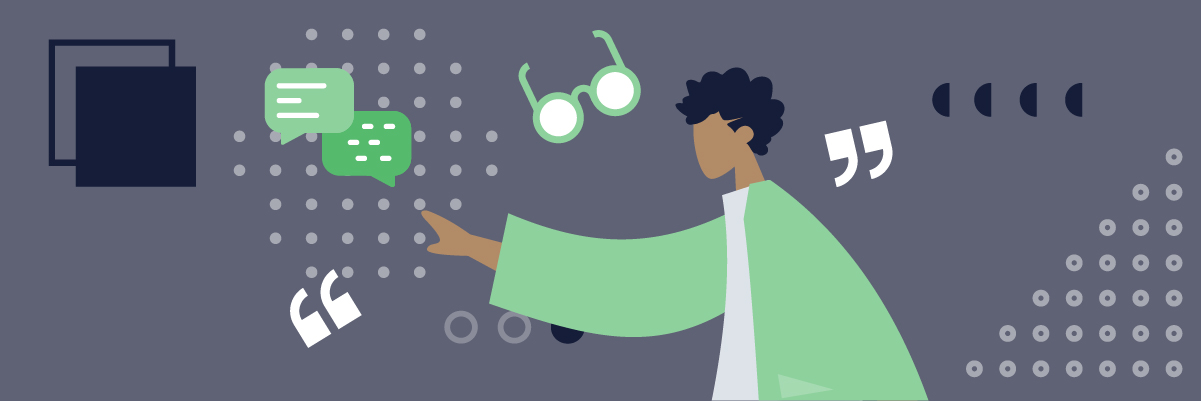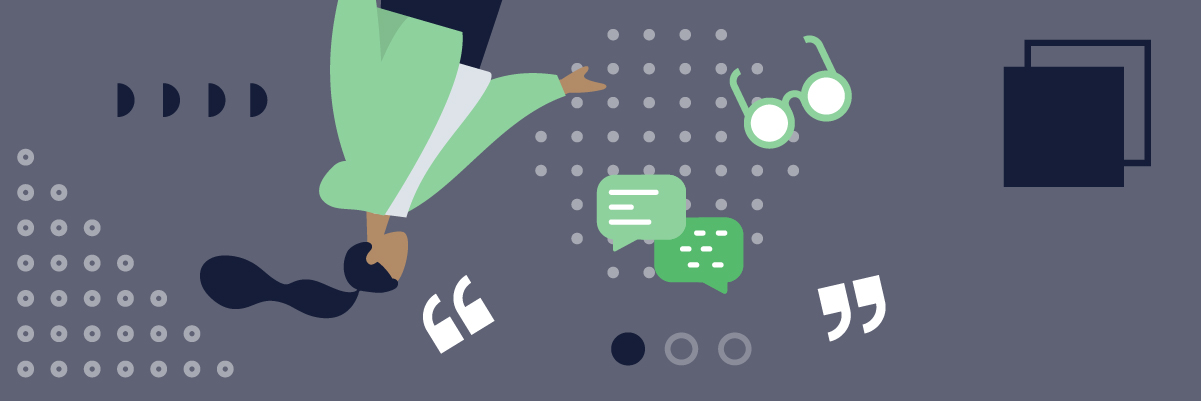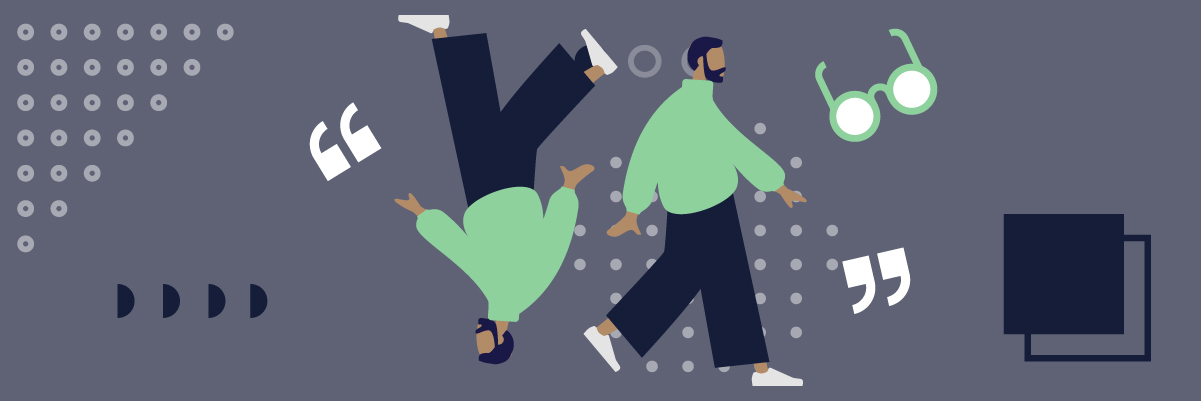The first pillar of effective communication is to understand your audience. In reality, you choose specific words for your boss and another set for your friends. Research indicates that 78% of customer satisfaction comes from the tone you use during an engagement. Even in informal writing, a formal tone is essential.
Interestingly, the tone is more than how you sound on the phone. It involves the words you choose towards your customer, punctuations, emphasis, and other subtle factors. The accompanying body language also determines the tone in a one-on-one setting.
While tone cannot be seen or touched, a person can feel it in your writing, phone conversation, and when engaging in person. The mere use of positive language like ‘please’ and ‘thank you is not enough. It only accounts for 7% of the tone.
What is this so-called “tone,” and how does it impact your communication?
What is Tone?
The tone of a voice refers to several things that come together to pass a message. Its description can be compared to the taste for a plate of food where you cannot determine the specific ingredient responsible for a particular flavor.
Still, you can give the general feel of your preferences. Tone, therefore, boils down to the altitude that a reader can decipher from your writing or speech.
However, tone and voice are worlds apart. But how is that possible?
Well, look at it this way; you may speak to your kid in the same firm voice you use on your boss. However, you can never be tough on your boss as you would be when disciplining your child.
Nevertheless, the elements that add up to form the tone of a written piece or spoken words can also better understand the message.
So, Why Invest a Formal Tone in Informal Writing?
The tone has everything to do with diction, punctuation, words, and syntax in your communication. Through these elements, your reader or listener will decipher a particular attitude interpreted through the tone.
Customers, readers, and the audience are susceptible to your tone when creating content. As a writer, freelancer text editing services or letter writing service or customer service personnel, you must understand how punctuations or the choice of one word over another can change the message you are sending.
Most service-based positions insist on a particular tone based on the customer they are serving. For instance, customer care representatives are required to be semi-formal, such that you build a cordial relationship while maintaining the institutional feeling. However, when one business is transacting with another, the tone is purely formal.
Note that maintaining a cordial relationship with your shareholders requires meeting most of their expectations.
Characteristics of Different Tones including a Formal Tone
To understand different tones, you must examine the characteristics that define a writing style and distinguish one tone from another.
Generally, here are three main characteristics that can help you define the tone of any piece of work. Of course, you can use these characteristics as a checklist when assessing the tone of any content.
a. Nonassertive
Nonassertive writing tells the audience that you do not care.
From the words, body language, and punctuation, the audience can do whatever they want. A nonassertive conversation or writing shows a person lacking confidence and detached from the conversation.
It is almost as if the content is empty.
Nonassertive content uses mundane and obvious words that do not inspire confidence or imagination in the reader. As such, the vibe in such a scenario is dead.
This is the worst tone you can use for business because it passes as arrogant, boastful, and self-centered.

b. Aggressive
An aggressive character creates the impression of an overbearing person. It is the kind of writing where you can feel the person shouting even in a written piece. Such is the type of writing that comes with a lot of anger.
This kind of writing may include numerous punctuation marks, heavy words, and deadlines or ultimatums. Its words are mean and sometimes rude.
Aggressiveness in writing or presentation shows an impatient person. The reader feels as though they are at fault. This kind of language may indicate a broken relationship.
c. Assertive
An assertive writing style is formal and respectful. It is the kind of style that fits a professional work environment. Because of this style, the reader will feel valued and part of a dialogue. It is the kind of style applied when solving a problem or seeking progress on an issue.
It is possible to feel the three categories of characteristics at some point in a speech or writing. However, the general tone is either formal or informal, as dictated by the audience.
What then does this formal and informal tone mean in writing?
Here is a detailed explanation to make the idea easier to understand.
What is a Formal tone?
The mention of a formal tone signals an informal one; just like light helps the world understand darkness, an analysis of casual style will make it easier to understand the formal tone. Further, examples and context of use will cause the idea of a formal tone clearer.
Let’s get right into it, shall we?
Formal Tone
You might have attended an event where the dress code was indicated as ‘formal.’ It could have been an interview or corporate dinner. Such is a place with rules and protocols. The same can also be said of a formal tone.
A formal tone is official, no-nonsense, precise, and straightforward. Hence, a formal tenor is not the kind of language you would use when playing a video game or watching a movie with friends.
It is the language expected when writing an apology letter or applying for a job. Every word in your conversation must make sense: no stutters or colloquial phrases.
That said, what makes a formal tone?
Here are a few ingredients that make the tone more comfortable to identify and understand:
· Formal Style is Complex
Formal writing uses longer sentences that allow you to introduce, elaborate, and conclude profound ideas.
The complex construction creates a feeling of seriousness.
· Formal Style is Objective
A formal tone does not leave any room for opinions or emotions. For instance, you will not encounter ellipses or punctuation marks that emphasize points. Views only apply when the writer cites a third-party source.
· Formal Style Uses Full Words
Formal writing style does not use contractions that are used to represent words or titles.
In case abbreviations appear, the full word must have been introduced previously.
The tone even discourages short-form words like ‘it’s’ for ‘it is.’
· Formal Writing is Big on Third Person
Formal writing is not personal. The writer is disconnected from the content. Consequently, he does not use ‘I,’ ‘we,’ and ‘us,’ among such other words that denote a personal attachment.
Formal writing engages your audience through precision and focusing primarily on content. It is meant to convey a message with no dual interpretation.
Therefore, this type of tone seeks to use the least number of words possible to convey the desired message.
Informal Tone
An informal tone is the opposite of formal. Simply put, there are no rules for informal writing. Still, the practices of language and sentence construction must apply, but with a lot of leeways.
Note how informal writing style gives you a feeling of a relaxed environment.
The following aspects signal that you are dealing with an informal piece of work.
Let’s begin.
1) Uses Colloquial Language
The language is similar to an off-the-curve conversation. It includes such elements as slung, figures of speech, asides, and broken syntax.
It is also personal, enabling you to use ‘I’ and ‘we.’ Further, you can address your audience as ‘you’ and ‘your.’
2) Big on Simple Language
Informal sentences are short and may sometimes be incomplete.
At some point, the writer may include ellipsis.
3) Includes a lot of Abbreviations and Contractions
If you find I’m instead of ‘I am, you are reading through informal writing. Other words like ‘TV’ and ‘Photos’ that are simple formats of longer words are also common. It is an attempt to complete sentences faster or appear ‘cool.’
4) Shows Empathy and Emotions
An informal writer develops a personal connection with the reader or the content. You see pitiful words and the expression of emotions. As a result, the content is unique to a group or person.
Informal writing is challenging to understand for third parties because of the personal approach.
For instance, friends may use coded language that has developed over time. Even corporate brands have a chance to use informal language, especially in the advertisement.
Such a language builds a closer connection with your clients.
Examples of Formal and Informal Tone
It is easier to distinguish between formal and informal tone using examples. The best example to demonstrate formal and informal tone is using sentences that convey the same message.
Here are excellent examples to make the concept easier to understand:
Example 1
Informal: I asked the teacher about exam preparation, and he said that we’re behind, especially for candidates.
Formal: When questioned about exam preparation, the principal said that more needed to be done.
In the informal sentence, the use of ‘I’ gives an idea of the people involved. In the formal sentence, the focus is on message. ‘We’ is also an indication of a personal connection to the story. Two words, ‘we’ and ‘are,’ have also been joined. Such differences can be seen when assessing formal and informal sentences.
Example 2
Informal: When one is preparing to eat, washing one’s hands should be the first step.
Formal: When preparing to eat, wash your hands first.
The first sentence is uncertain and also features words in short form like ‘one’s. It indicates an informal tone. In the other sentence, the message is clear and can apply to anyone.
The above sentences only highlight a few aspects of informal and formal tone usage. However, some words like ‘you’ and ‘your’ are useable in a formal language, but you must avoid them where possible.
Nevertheless, a formal tone focuses on the message and is never emotional.

When to Use Formal in Informal Writing
The formal tone of writing is not automatically better than its informal counterpart. Preferably, each tone has its place in communication.
As a writer or speaker, be cautious and deliberate so that the style chosen fits the needs of your target audience.
For instance, a professional letter demands a formal tone. When addressing another business, you must also maintain a formal style because the email or message may end up in a board meeting or company files, away from the manager known to you.
Do you need to hire an online paper editor or a online copy editor?
It is worth noting that while emails tend to be less formal than paper communication, they must maintain a formal tone. They form part of official contact with your customers though they must remain friendly. Furthermore, the tone for commercials is slightly different because it is meant to advertise your brand and create a cordial relationship.
It’s a Wrap
The best tone in any communication environment is contextual because you choose the tone that will best deliver your message.
A formal tone focuses more on the message to guarantee clarity. If the technique is wrong, the desired message will quickly be lost.









